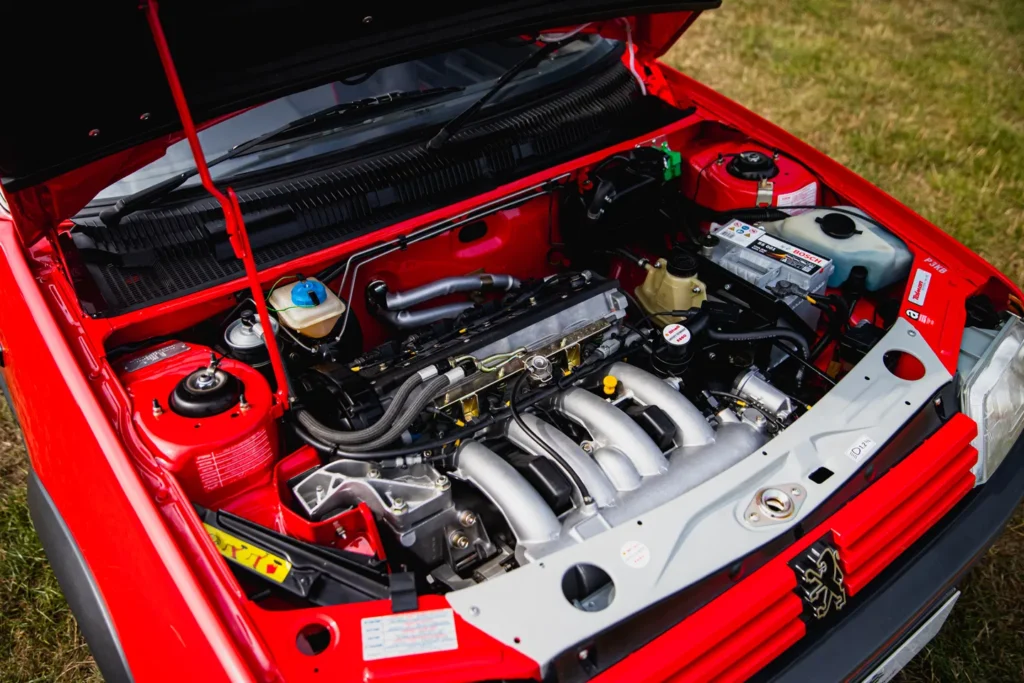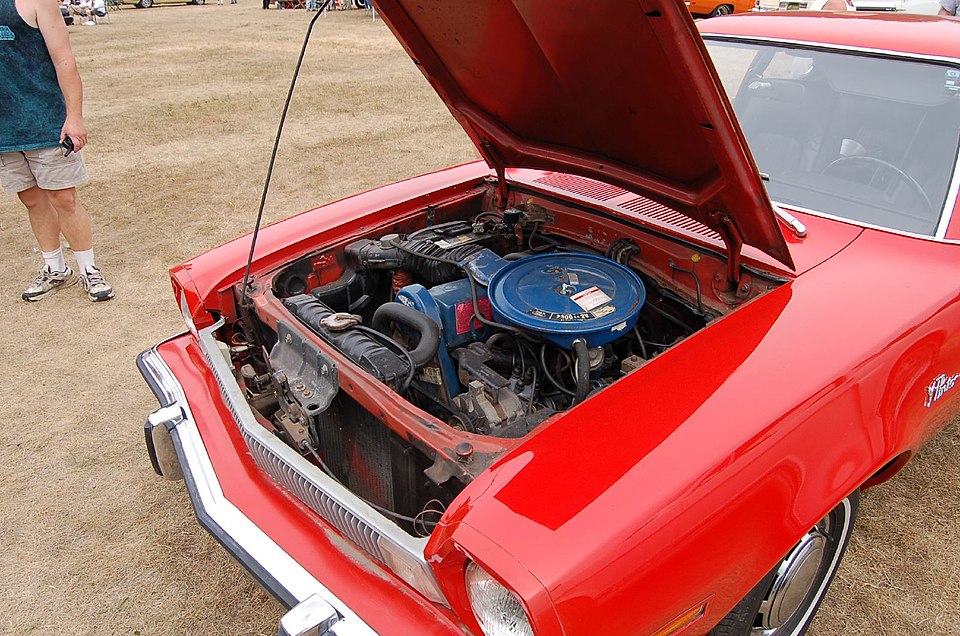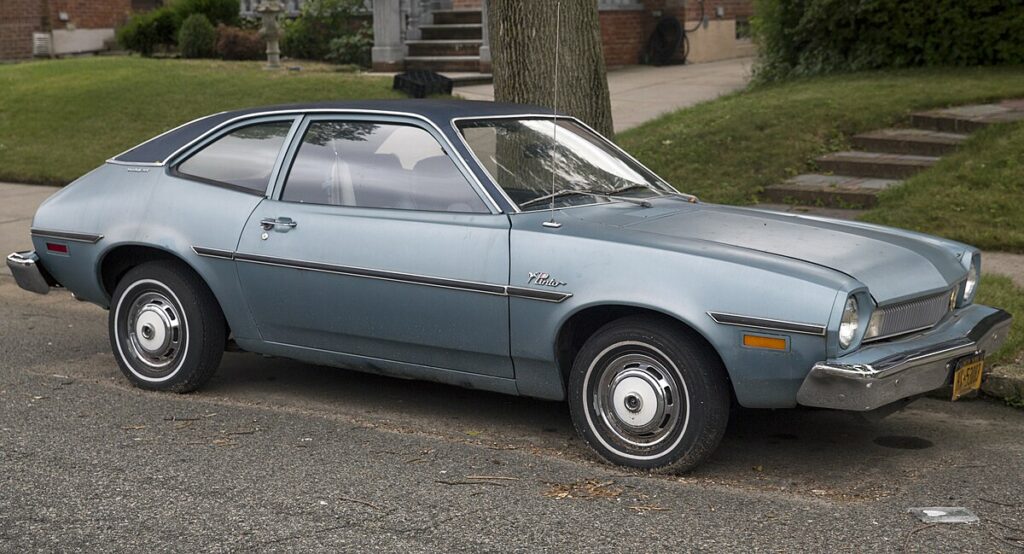Table of Contents
Table of Contents
The Ford Pinto engine seems to have been around for ever and its strengths and weaknesses ought to be well known by now. For what is basically a very simple engine design there are complexities, especially in the valve train, that mean that many tuned engines don’t realise anything like their full potential. Made over the years in 1.3, 1.6, 1.8 and 2 litre capacities, it is mainly the 2 litre that is of interest for tuning purposes. Anyone with a smaller engine would do well to fit a 2 litre as a first step – they are plentiful enough in breakers yards. 100 bhp per litre is just about possible with the Pinto engine but it takes very good head work and attention to detail in the valve train. Not many rally/race spec engines actually make more than 160 bhp if they are put together from off the shelf parts.
The 90.8mm bore and 76.95mm stroke mean the Pinto is very “over square” compared to modern front wheel drive engines. This means that high rpm is no problem and there is plenty of room for big valves. Early Capri/Cortina blocks were cast very thin and it is best not to bore them over 92mm although for road use you can usually get away with 93mm. When the Cosworth was introduced, the block was made considerably stiffer and later this “205” block became the standard item in Sierras and Transits. The 205 block can go to 93mm comfortably for normally aspirated use and 94mm is possible for non race engines. For high boost turbo engines even the 205 block can let go though but there’s an even stronger block available. The 200 block from the Sierra Cosworth 4×4 has a thicker rear flange with no core plug in it and more material round the cylinder bores.
An easy conversion to increase capacity is to use the 93mm pistons from the 2.8 V6 Cologne engine which can be bought in oversize’s up to 94mm. They have a lower compression height than the 2 litre piston so some skimming of the block is needed to get the compression ratio right but they are cheap and make a perfectly good road piston. Capacity on a standard crank is 2091cc at 93mm and 2136cc at 94mm. Crank stroke can also be increased with special steel billet cranks but of course it is expensive. About 88mm is the longest stroke that fits comfortably without fouling the block walls or oil pump. With a 93mm bore this stroke gives 2391cc and with a 94mm bore 2443cc. A normally aspirated 2.4 litre with good head and induction system can give close to Cosworth levels of torque and power.
The standard crank is very strong and there is no need to change it for even race use. It does supposedly have a tendency to snap flywheel bolts though on very high output engines and the Cosworth crank has 9 instead of 6 bolts to prevent this. Adding extra dowels is a good security measure or just use the Cosy crank as they are more readily available these days. The rods seem to withstand 7,500 rpm without problem but for ultimate race engines pulling 8,000 rpm plus they are best changed. The Cosworth rod is much stronger but is designed for a floating gudgeon pin with circlips as opposed to the standard press fit item. The Cosy rod is also a tad longer and this needs to be allowed for in the build. Special Carrillo style rods are available in various lengths from a variety of sources.
Standard pistons are heavy and have thickest rings which do not like sustained high rpm use. Use 7,500 rpm regularly and the ring lands will batter themselves to death in short order. Some race series, like the F2000 hot-rods, require standard pistons to be used and in such cases it is best to life them and change them regularly to avoid problems. For conventional race engines there are plenty of options in forged pistons from Acrylate, Omega etc which will stand all the abuse you can throw at them.

Cylinder Head
Properly modified the Pinto head can flow lots of air – with big valves the standard 140 cfm can be raised to over 190 cfm. The inlet port is if anything too big as standard and only needs enlarging if the very biggest valves are used. The shape of the short side bend is critical though if good high lift flow is to be achieved. Even minor changes in the desired shape can lose 20 bhp worth of flow and I like to put every Pinto head on the flow bench to check that I have ground the correct shape in this area. Off the shelf heads just won’t cut it on a race engine and if you want big power from a Pinto then expect to spend a fair proportion of your budget on getting the head modified properly.
The injection Sierra head flows quite a bit better than the normal Capri/Cortina head in standard form. However there is no real advantage to it if the port shape can be modified as either head will end up with similar flow after grinding in the appropriate areas. It can be worth fitting for race series when porting is not allowed though.
Standard valves are 42mm inlet and 36mm exhaust. The standard exhaust valve is big enough and there is little point in fitting larger ones. Considerably bigger inlet valves can be fitted to good effect though. Most people use what is called the “Group 1” oversize valves which for some obscure reason are an imperial size. 1 3/4 inches inlet (44.4mm) and 1 1/2 inches exhaust (38.1mm). This is not as big as you can go though and I often use 46mm inlets for ultimate heads. Other people have experimented with even larger valves than this but it takes special offset valve guides to get them to fit and is not worth the effort in my opinion
Beware of buying valves with either the wrong stem diameter or wrong stem length. The length problem we’ll cover in the valve train section later but stem diameters are also an issue. The standard inlet valve is 316 thou diameter and the guide bore in the head is 317.5 thou. This is just over 8mm (315 thou) which is a standard continental guide size. Some firms make Pinto valves at 314 thou to fit an 8mm bronze guide and these will end up far too loose in the standard head. Make sure you ask what the stem diameter is exactly to the nearest half thou before buying or get the entire job done by someone who supplies correctly matching parts.
For very high compression race engines it is worth looking at the 1.6 head as a starting point for modifying rather than the 2 litre head. The 1.6 head has 38cc chambers and the 2 litre has 50cc chambers. It takes a lot of skimming to get a 2 litre head to the desired chamber volume for race use and this weakens the deck face. The 1.6 head can often give you the desired compression ratio without a lot of machining. However it uses a longer valve than the 2 litre so you can run out of valve spring clearance unless you get the valve length correct or machine the spring seats in the head. Finally make sure you check the cam bearings before using a head. The centre bearing tends to wear much more rapidly than the outer two and is best replaced as a matter of course.
For unleaded petrol use you need harder exhaust seat inserts fitted into the parent cast iron material. Injection engines built after about 1988 had these as standard and are worth using if you can find one to save the cost of modifying earlier heads.

Valve Train Geometry
This is the part of the Pinto engine that seems to stump so many people, including so called “experts”, who are either unaware of the problems or fail to set things up properly. The main issue is as follows – the length of the valve stem affects the valve lift and also the point at which valves start to open and close. It is due to the complex geometry of the finger follower system that Ford designed to open the valves with. The longer the valve the less lift you get – and in many cases you will find performance cams that have not been set up properly give even less lift than a standard cam. Not surprisingly this reduces power greatly and often negates the entire point of buying the performance parts in the first place.
For each additional 1mm in valve length you can lose up to 0.5mm in valve lift. Most “performance” valves are at least 2mm too long.
The “effective” length of the valve stem is not just an issue with the valve itself. The deeper the valve seats are cut into the head the more the valve stem protrudes of course. Also the diameter of the “base circle” of the camshaft lobes changes the cam geometry – so cams which have the same profile but on different base circle diameters will not work the same. Finally there are various makes of follower available and the shape of these can differ too leading to further changes in lift and timing.
The 2 litre head uses 111mm long valves as standard and the 1.6 with its shallower chambers uses 113mm valves. Most Group 1 valves are a compromise at 112mm which enables the manufacturer to avoid having to make 2 different valve lengths. Of a fashion these valves will “fit” either head but without really working properly in either. Fit them to a 2 litre head, which is of course what most people do, and the extra length reduces the valve lift by an appreciable amount. The only solution is to either have your own valves made properly or to shorten ones which are too long. This can raise another issue though. Many valves have a hard stellate tip on the stem to resist wear and if you grind this off, the valve tip will wear away in no time flat – often leading to a finger jumping off the valve or other nasties which can wreck the engine.
The correct length for a properly designed 2.0 Pinto inlet valve is 110mm
It’s even more complex than that though. The “effective” length of a valve is the distance from the 45 degree seat face to the tip. Now the standard Pinto valve has a very thick head sticking down into the combustion chamber underneath the seat part – 1mm thicker than average for a valve of that size. You could just machine that 1mm off in a lathe without affecting the seat or any other part of the valve and remove some excess weight as a bonus. The valve is now 110mm long of course but the tip still comes to exactly the same height relative to the cam when the valve is installed as it did previously.
Now when people make a big valve they never stop to realise how thick the valve head is on the standard valve. If they design the new valve with a normal head thickness and specify it at the standard 111mm long it is “still” 1mm longer than it ought to be and hence the cam still doesn’t generate enough lift. The correct length for a 2 litre valve with a normal style head is 110mm long. So the “compromise” valves which are made at 112mm long are actually 2mm longer than they ought to be instead of just 1mm longer.
That’s enough to kill a huge chunk of your cam lift. In fact the reduction in cam lift can eliminate most of the gains from fitting the big valve and porting the head in the first place! It really does concern me that apparently not a single tuning firm has managed to work out how to properly design a Pinto valve despite the engine having been around for over 30 years now.
Valve clearances
The clearances are set by winding the ball stud up or down. If the valve stem is too long, or the seats have been cut too deep, then the ball stud, which is on the opposite end of the rocker, has to be set lower. A quick look at a head ought to make that clear. If the valves are too long then you can end up with the ball stud wound as far down as it can go and still not be able to set the valve clearances properly. The “trick” to get round that is to make the locking nut thinner so you can wind the ball stud in a bit more. This, I have to say does my bloody head in. Tuning firms staffed by the hard of thinking make the valves too long, which kills the cam lift and potential power, and then bugger something else up to get round it rather than stop and think why the problem arose in the first place. So if you’ve ever had a big valve Pinto head on which you couldn’t set the valve clearances now you know why.
Valve Material

Final point on valve material. The triple collet groove that Ford use is very heavily loaded and prone to distorting and “lipping” up. Anyone who has tuned a Pinto with the commonly available “performance” valves will be familiar with the problem of getting them back out of the valve guide at strip down time because there’s a huge burr round the collet grooves where they are starting to break up. In fact this problem affects any engine with the triple groove which includes many Fords, VW, Peugeot, BMW etc.
The reason is the valve material used and the lack of heat treatment applied. Most “performance” valve stems are made from the wrong material i.e. 21/4N stainless steel which isn’t hard enable so you can’t heat treat the collet grooves to prevent this wear. You never see this problem with standard valves because Ford (and other OEs) were sensible enough to use the right material for their design – hardenable EN52B steel for single material inlet valves and EN52B stems with 21/4N heads for exhaust valves. Also it is essential that valve stems are chrome plated or they’ll wear out in no time flat in the cast iron guides. If you want to check whether a valve you’ve bought has soft or hard collet grooves just use a magnet. 21/4N isn’t magnetic, EN52B is.
Some time ago I was talking to the machine shop manager of a large tuning firm who sell thousands of these ‘performance’ 21/4N triple collet groove valves for the Pinto, CVH and Crossflow engine and I asked him why they used a material that had known problems in this area rather than using a hard enable material for the stem of the valve. His reply was they were well aware of the problem but at least it meant that when they rebuilt a head for a customer they could tell him it needed a new set of valves and increase the bill accordingly. An interesting take on customer service I thought.
I’m introducing my own range of properly made valves for the Pinto now in 44.5mm and 46mm sizes. Details will be on this site when they are available. They’ll have the right head shape, the right length and be made from the right material with chrome plated stems. As a guide they’ll be worth up to 20 bhp over the same sized valves with all those things wrong. They also weigh a lot less due to correct design which means higher rpm on the same valve springs or less spring poundage for a given rpm.
That saves wear on the cam lobes as well as increasing bhp due to reduced valve train losses. The std 42mm Ford valve with its big chunky head weighs a whopping 101 grams. My 44.5mm inlet valve only weighs 83 grams and the 46mm one weighs 86 grams. The standard 36mm exhaust valve is plenty big enough for most applications and isn’t really worth changing.
So setting up the Pinto valve train properly is a matter of carefully matching valve lengths to the particular cam and fingers being used. It can take a lot of work to do right and that costs money so many people don’t bother or don’t know it even needs doing. Get it wrong and you can kiss 10% or more of the potential power goodbye. That’s 20 bhp in a full race motor. In a road engine it can mean that the bits you bought to supposedly add 20 bhp, only add 5 or 10 at most. When you get to the bottom of this page you’ll maybe understand why so many rally spec Pintos only made about 150bhp instead of the 180 the owners thought they were going to get.
One final point – several firms, mainly the UK cam companies who in my opinion couldn’t design a hole in a paper bag if their life depended on it, sell “long pad” finger followers which have a very small radius on the bit that contacts the tip of the valve stem. This can smash the tip of the valve to pieces especially on valves which don’t have hardened ends which as we’ve seen above means most of the aftermarket big valves you can buy.
Chances are that if you buy a cam kit from the well known suppliers, these are the type of followers you will get. Best place for them is in the bin! In most cases the standard Ford follower will work perfectly well, even with full race cams, but you need to check every lobe to make sure the “wiping” area stays within the pad on the finger. Whether it does or not is yet one more function of the valve length issue sent to try the engine builder’s patience.
Camshafts
The Pinto engine loves high valve lift but not too much duration – so guess how most of the road cams you buy off the shelf are ground ? Yep – you got it in one – low lift, lots of duration. Yet another tour de force from the wonderful cam companies this country is afflicted with. Add to this low lift the fact that valve length issues mean that most cams never generate their intended lift anyway and it is not hard to work out why power gains are often disappointing with considerable losses in low rpm torque. However the Pinto always had a problem with cam lobe wear so if you run high lift cams they won’t last for ever.
It boils down to a choice of what sort of service life each person is prepared to live with for a given power output. I used to do a special road cam which really made road motors fly but there is not so much demand for Pinto stuff these days. Off the shelf cams can be made to work reasonably well though if valve train issues are handled properly so as to ensure the cam is at least working the way the designer intended it to.
For race engines there is plenty of choice in cams from Kent, Piper, Crane etc and as a rule the race cams work much better than the road cams. Choice is a matter to be carefully considered as part of the total engine build package and the desired torque characteristics of the engine.
Carburation
The standard twin choke Weber DGAV is a very good carb for even tuned road engines and 140 bhp is possible without changing it. The standard inlet manifold is also good with good airflow and even mixture distribution to all cylinders. The next logical step is to fit twin DCOEs and these will give between 12 and 15 bhp depending on the state of tune. 40s are fine for road engines up to about 150 bhp but above that 45s are a must and many race engines run 48s although without showing any real gain over 45s in my opinion.
For ultimate power without losing low end torque, throttle body systems are the way to go. If your budget stretches to these then please have a look at our system when the pics are posted to this site – shouldn’t be too long now.
Power Outputs

The standard 2 litre was rated at 105 bhp (more like 100 bhp in reality) in carb form and 115 bhp with injection. Some of the extra power came from changes to the head design though and the rest from the extra flow of the injection system. So a good carb engine can be expected to show about 80 to 85 bhp at the wheels after transmission and tyre losses and an injection engine about 90 to 95 bhp.
With a well ported Group1 valve head and decent road cam about 130 to 135 bhp is possible on the standard carb. A good exhaust system helps too – the Sierra system is not too bad anyway for road use but the early Cortina single downpipe system is best replaced with a 4/2/1 manifold and system. Add twin DCOEs and up to 150 bhp is on for road use – perhaps a tad more with a 2.1 engine and 1.8″ inlets. Knock off about 17% to get to wheel bhp figures. Most engines built with off the shelf bits won’t see within 20 bhp of the above figures though.
For rally/race use you can get 200 bhp (165-170 at the wheels) from a Pinto but few engines make more than 160/170 flywheel unless a lot of attention has been paid to head work and valve train issues. Many years ago when I first started doing development work on the Pinto engine, my local rolling road used to get a lot of the rally boys in with full monty Mk 2 Escorts and suchlike. The usual engine spec was Group 1 or even 1.8″ valve heads, Kent RL21 or 22 cam, twin 48s and full exhaust manifold and system.
Usually home built with off the shelf heads etc but the occasional professionally built motor used to turn up. The average power they showed was 125 bhp at the wheels – say 150 to 155 bhp flywheel being fairly charitable with the transmission losses. They all arrived expecting to see 150 plus at the wheels of course and usually went away well disappointed. One days work on the valve seats, port shapes and valve train would add 25 bhp to most of those engines – all power that was basically sat there already – just not able to get out due to lack of care and a little knowledge.
Anyone who wants to get deeper into Pinto engines ought to buy a copy of David Vizard’s book – it’s perhaps not up to date any more in terms of modern cams or mappable fuelling systems but all the general principles are sound and you won’t go far wrong by following his advice.
The worst Pinto engine I ever saw was an absolute abortion of a thing from a firm in Essex “Specializing” in Ford engines. It was a 2.1, twin 45s, Group 1 head, fast road cam, full manifold and system in of all things a Mk IV Cortina. After paying his £2000 and running it in, the guy arrived at the local rollers for a tune up session. No matter what they did to jetting, ignition timing or cam timing the thing wouldn’t produce more than 95 at the wheels (say 115 bhp flywheel) – about 10 up on stock and a country mile short of the 150 flywheel the guy was expecting.
In desperation the rolling road operator put a rally cam in it but it made no difference to the power – something in there was just stopping the engine working no matter what bits were bolted to it. It had good compression and nothing obviously wrong from the outside so in the end they took the head off and sent it to me for flow testing. I rapidly decided that I didn’t need to go anywhere near the flow bench to tell what was wrong. The “porting” consisted of two milling operations with a boring bar – one from the manifold end and one down the valve throat.
Where they met was a sharp knife edge on the short side of the port that the air just refused to go round and it was playing havoc with the pulse tuning as well no doubt. No-one had been anywhere near it with a porting cutter in even the most cursory attempt to smooth this edge off. In fact to say those ports had never been touched by human hand was probably not that far from the truth. I suspect the workshop staff in that particular “tuning” emporium are paid in either peanuts or bananas, take their lunch breaks in the trees and respond well to the name “Cheetah”. But I digress.
With the head fully reworked and a high lift, short duration towing cam the engine made 133 bhp at the wheels a few days later – say a solid 160 flywheel. More frankly than I was expecting myself and more by far than that rolling road operator had ever seen in a tractable road car – and he saw a lot of Pintos. Not only that, but the power curve started from idle – a classic demonstration of how much better it is to have high head flow and less cam duration than the other way round. You could let the clutch out slowly at tick over speed so the car was just crawling at about 4 mph, floor the throttle and light the back tyres up instantly. Compare this to the 120/125 at the wheels the rally boys were getting with poor heads and big cams – less peak power and nothing below 3,000 rpm either.
I still wish I’d charged that job by the horsepower I found and not by the hour! The 38 bhp at the wheels increase represented about 45 extra at the flywheel – if I’d charged that at £20 per horsepower it would still have been damn good value and a lot more than I actually did charge for the work. I even took the thing for a quick spin myself but only managed a mile up the road and back – the suspension on this clapped out Cortina was so scary that I didn’t dare take it over 50 mph. The owner seemed well chuffed though and whether he ever kept it on the road without crashing or the wheels falling off I’ll never know.
PRICES – the company is not VAT registered so any prices shown are the total payable.
Guide prices for head work:
Std valve ported head – £550
44.5mm inlet valve, std exhaust – £700
46mm inlet valve – std exhaust – £850
Unleaded exhaust seat inserts – add £100
Drill and ream head to take bronze guides or replacement iron guide inserts – £70
Bronze guides per set of 8 – £64
Machining for race heads – modifying valve spring seat bases, big exhaust valves, special porting, chamber balancing, special valve train work – POA
44.5 and 46mm inlet valves – £60 per set



2 Comments
where can i purchase these intake valves @ 110mm
Hi Bill, you can find 110mm intake valves for the Ford Pinto at various auto parts retailers or online stores like Summit Racing or Jegs. Additionally, checking with local performance shops or salvage yards may yield some options.